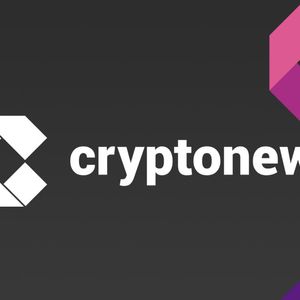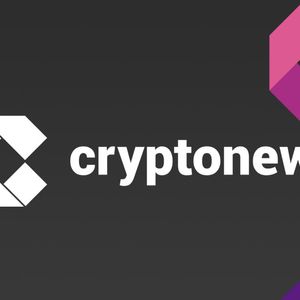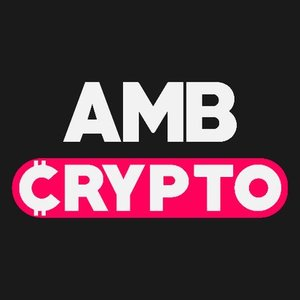The Super Representative community of Tron has voted to slash network transaction fees by 60%, reducing energy unit prices from 210 sun to 100 sun in the largest fee cut since the blockchain’s founding. The proposal took effect on August 29, as Tron defends its position as the dominant USDT rail, hosting a stablecoin supply of $80.97 billion compared to Ethereum’s $73.8 billion. Source: DefiLlama Tron Leads the Stablecoin Race The fee reduction comes as the TRX token’s appreciation erodes Tron’s competitive advantage over rival networks. Rising TRX prices from $0.12 in early 2024 to $0.32 by Q3 2025 pushed USDT transfer fees from $1.64 to $4.28, while TRC20 transfer costs increased from $0.67 to $0.87. Justin Sun announced the community proposal would impact short-term profitability but expects increased transaction volume to drive long-term revenue growth. On August 26, 2025, the Tron Super Representative community proposed to reduce Tron network fees by 60%. This is the largest fee reduction since the founding of the Tron network. The proposal has already passed and will take effect at 20:00 (GMT+8) this Friday! Here’s my view on… — H.E. Justin Sun (Astronaut Version) (@justinsuntron) August 29, 2025 The network processes over $24.6 billion in daily USDT transfers, nearly seven times the volume of Ethereum, while maintaining a 98.56% dominance in its stablecoin ecosystem. Tron’s fee structure aims to expand its user base by 45% to 38.9 million eligible accounts capable of completing typical USDT transfers. The network processed 273 million transactions in May across 28.7 million active addresses, with 75% utilizing gasless transaction models, which fuel adoption in remittance-heavy regions. Strategic Fee War Intensifies Blockchain Competition Tron’s aggressive fee reduction aims to counter rising transaction costs that threatened its dominance in stablecoin payments. The network’s analysis reveals that a 60% cut could add 12 million potential transfer users while maintaining transaction volumes that drive revenue, despite lower individual fees. The proposal passed after three weeks of community discussion, with Super Representatives acknowledging short-term revenue impacts. Quarterly dynamic fee reviews will consider TRX price fluctuations, network activity levels, and growth rates to balance profitability with competitive positioning. USDT transfer fees on Tron dropped from 2.47 TRX to 0.72 TRX in July, marking a 70% decline that reinforced the network’s role as a low-cost payment rail. Major exchanges, including Binance, promote TRC-20 as the default option, branding it “low fee, high speed” compared to Ethereum’s higher costs. The fee reduction shifts TRX supply dynamics toward inflation at current transaction levels. Tron’s analysis indicates that a 50% fee cut would generate 18.7 million new TRX tokens during the measured period, reversing the previous deflationary trend of 76.1 million tokens burned. Source: GitHub However, increased transaction volume could offset inflationary pressures by generating higher total fees. The network’s gasless model already accounts for 75% of activity, while DeFi protocols like JustLend maintain a total value locked of $6 billion, despite fee adjustments. Tron recorded $308 million in fee revenue during June despite offering gasless features. USDT Dominance Faces Regulatory and Competitive Pressures Tron hosts 51% of all circulating USDT globally, with a supply of $80.97 billion, compared to Tether’s total issuance of $157.1 billion across all blockchains. The network processes daily volumes exceeding $23.5 billion, consistently outpacing Ethereum’s $20 billion in USDT settlement activity. Notably, regional adoption also drives Tron’s stablecoin success, particularly in Latin America, the Middle East, North Africa, and Asia-Pacific markets, where freelancers and merchants prioritize cost savings. Regulatory frameworks, including the US GENIUS Act, EU MiCA, and Hong Kong’s Stablecoin Bill, also eased its path to dominance. However, competition continues to intensify from Ethereum Layer-2 solutions and Solana, which the chain has started to optimize for improved scalability and lower costs. Meanwhile, amid growth, Nasdaq-listed Tron Inc. filed to register $1 billion in securities for TRX token purchases that will mirror MicroStrategy’s Bitcoin treasury model. Tron Inc. filed to register up to $1 billion in securities as it shifts its core strategy toward building a crypto treasury centered on TRX. #TRON #TRX https://t.co/ZwsRDeIAIx — Cryptonews.com (@cryptonews) July 29, 2025 The company’s traditional toy business failed to generate positive cash flow in 2024, prompting a pivot toward crypto treasury strategies. Additionally, there are ongoing governance concerns surrounding Tron Inc.’s board composition, which is chaired by Justin Sun’s father, with advisors from the Tron DAO and Tronscan development teams. It has been discovered that a recent $100 million reverse merger funding came from a Hong Kong trust where company directors also serve, raising concerns about how the governance actually works. The post Tron Votes to Slash Network Fees 60% to Defend Stablecoin Dominance appeared first on Cryptonews .














